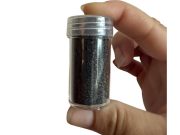The right stocks can make you rich and change your life.
The wrong stocks, though… They can do a whole lot more than just “underperform.” If only! They can eviscerate your wealth, bleeding out your hard-won profits.
They’re pure portfolio poison.
Surprisingly, not many investors want to talk about this. You certainly don’t hear about the danger in the mainstream media – until it’s too late.
That’s not to suggest they’re obscure companies – some of the “toxic stocks” I’m going to name for you are in fact regularly in the headlines for other reasons, often in glowing terms.
I’m going to run down the list and give you the chance to learn the names of three companies I think everyone should own instead.
But first, if you own any or all of these “toxic stocks,” sell them today…
Trump Media & Technology Group (NASDAQ: DJT)
This week’s focus turns to Trump Media & Technology Group, where the intertwining of business and personal branding poses unique risks. The company, tightly linked to its founder’s public persona, faces challenges that extend beyond usual business metrics. As former President Trump re-engages with broader social media platforms, including his recent activity on X (formerly Twitter), the unique appeal of his dedicated platform may diminish.
Trump Media & Technology Group’s platform has struggled to match the scale and growth of established social media giants, primarily appealing to a specific political demographic. This niche market focus limits its potential for wider audience adoption. Additionally, the business’s success appears overly reliant on political cycles and Trump’s personal political fortunes.
Given these factors, the stock presents a higher-than-average risk due to its potential volatility linked to political events and sentiment. Investors looking for stable returns may find this environment challenging. The platform’s inability to broaden its appeal and the recent diversification of Trump’s own social media presence suggest it may be time to consider selling this stock from your portfolio.
Comcast Corporation (NYSE: CMCSA)
Comcast, despite being a major player in broadcasting and cable, has seen its shares dip by 11% year-to-date, compounding a 9% loss over the past five years. The company’s allure as a steady dividend payer with a 3.17% yield is overshadowed by its financial stagnation and limited growth prospects.
In the recent quarter, Comcast reported a 2.7% year-over-year decline in revenue, with net income also falling by 7.5%. While there may be a temporary lift from events like the Olympic Games, the broader trend points to persistent low or declining year-over-year revenue growth.
Peacock, Comcast’s answer to the streaming wars, reported a 28% growth in revenue year-over-year, reaching $1.0 billion this quarter. While impressive, this figure represents just a fraction of Comcast’s total Q2 revenue of $29.7 billion, highlighting the minimal impact of streaming on overall revenue growth. Moreover, Peacock’s adjusted EBITDA loss of $348 million this quarter starkly contrasts with Comcast’s net income of $3.93 billion, suggesting deeper underlying losses than reported.
Given these dynamics, investors might consider reducing exposure to Comcast, as the current indicators suggest more downside risk, with limited potential for significant upside in the near term.
Consider Exiting Worthington Enterprises (NYSE: WOR)
Worthington Enterprises (NYSE: WOR) has shown some concerning signs in its latest fiscal quarter that suggest investors might need to reevaluate their holdings. For Q4 of fiscal 2024, Worthington reported a notable decline in net sales to $318.8 million, down 13.6% from the previous year’s $368.8 million. This drop across all business segments indicates a shrinking demand for the company’s metal manufacturing products, which range from steel processing to engineered cabs and pressure cylinders.
The financial downturn was exacerbated by a swing from an operating income of $15.3 million in the prior year to a significant operating loss of $56.1 million. This loss was heavily influenced by impairment and restructuring charges, highlighting severe operational inefficiencies.
Additionally, adjusted earnings from continuing operations fell sharply by 37.8%, from $1.19 per share.











